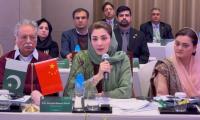engagements”, when the two sides meet briefly, with September 6, 1965 a grim reminder of why India needs to throw out “limited war”, from it strategy.
Indians, young and old, have pointed out to confusion when hostilities continue on a daily basis, questioning when it is really a war.
Capt S K Garg, who commanded an infantry company in the Khemkaran sector during the 1965 war, recently corrected some facts for those who easily manipulate history.
Recently, he wrote a letter in an Indian publication saying, “It’s true that on the Lahore front, the Pak Army carried the fight into Indian territory. In Khemkaran sector, the enemy had penetrated 20km. Brig Shammi of the Pakistani Army was killed on some recce. We were on the doorsteps of Lahore but, contrary to belief, could not have entered that city. All along its outskirts, fully equipped bunkers and pill boxes had been dug to check any enemy advance. Thus, no Indian division ever attacked Lahore in 1965. Rather, it was impossible.”
Young Pallavi Raghavan, a fellow at the Centre for Policy Research in New Delhi, in a refreshing piece writes, “The differences in the two countries’ interpretations of the war’s timeline reveal a deeper issue: We are never clear about just when we are in a state of all-out war.”
Nothing could be truer.
In her own words she brilliantly describes the dilemma of diplomats who wondered in 1965, whether technically the two countries were really at war.
She notes, “It is also worth considering that for several weeks in the summer of 1965, it was, in fact, not clear that the countries were formally at war. In the preceding months, even when the two sides had clashed in the Rann of Kutch, and rhetoric and tensions had been running high, officials, on both the sides closely connected with the developments, were unsure whether their countries were actually in a state of war.
Among the more unusual features of this conflict was also that the two countries’ diplomatic missions never shut down – the representatives did not leave their respective posts for the entire duration of the war. Admittedly, their movements were heavily restricted and all contacts with their respective headquarters severed, but that in itself was not a clear indication of a state of war.
Certainly, the Indian high commissioner in Karachi, Kewal Singh, had some doubts about whether in the legal and diplomatic senses war had actually broken out between India and Pakistan, and, if so, whether he should destroy confidential papers and cypher codes. In his autobiography, Partition and Aftermath: Memoirs of an Ambassador, Kewal Singh recounted how, in the absence of any official intimation, he had dispatched the Indian deputy high commissioner to Pakistan’s foreign ministry in Karachi to seek a clarification about whether war had broken out.
Bizarrely, the Foreign Office in Karachi replied that it would need to consult with Islamabad, where the presidency and the seat of government had shifted, to provide an answer, which it would do in due course. Like Kewal Singh, the Pakistani high commission in New Delhi faced a dilemma: to destroy the cypher codes or not? The deputy high commissioner, Afzal Iqbal, later described his improvised solution: escaping the surveillance around the Pakistan High Commission in Chanakyapuri, he deposited the cypher pads with startled Iranian and Turkish ambassadors.”
Pallavi also notes, “Rather than uncritically accept one version of the narrative, it is important to recognise that these legacies rest on selective interpretations of victory by both sides. In fact, the argument could very well be made that the reasons for the celebration are not unanimously held –that the battles that India acknowledges and claims as victories are not the ones that Pakistan prioritises.”
Justice Ejaz raises concerns over the lack of proper security for judges, saying ministers had surplus vehicles
Canada reiterates commitment to combating climate change and supporting vulnerable communities
Distribution to be carried out under KSrelief’s direct supervision, ensuring transparency and efficiency
Loan will finance several investments to strengthen city's water supply, sewerage, sanitation, and treatment...
Jirga aims to help reopen key routes in Kurram, which has severely impacted its residents
Court reserves verdict after recording statements of plaintiff’s counsel Athar Abbas, defendant’s counsel and...







